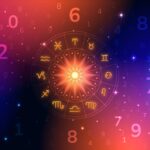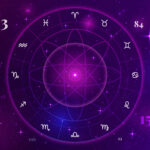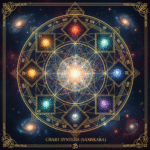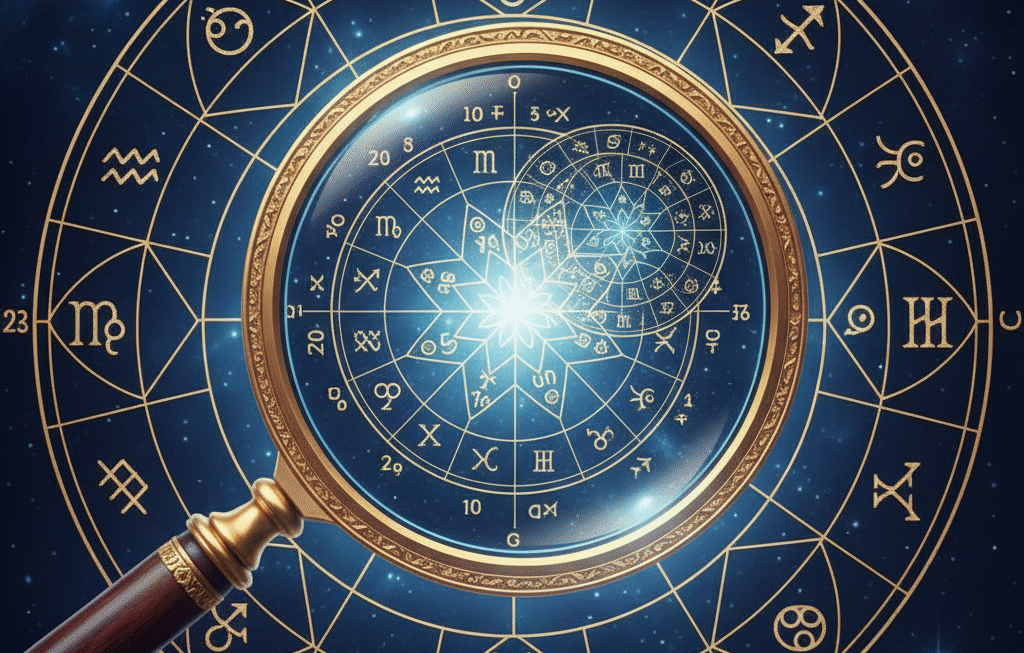Table of Contents
What secret lies beyond the surface of your main Vedic astrology birth chart? You might see powerful planets or auspicious combinations in the Rasi chart (D1), yet life unfolds differently than expected. Where does the true potential – for a fulfilling marriage, a successful career, or inner strength – really reside? The key often lies hidden in plain sight, within the most crucial of the divisional charts: the Navamsa, or D9 chart. Learning how to read navamsa chart data correctly is the difference between a superficial glance and a profound understanding of your astrological blueprint. This guide provides a step-by-step method for navamsa interpretation, revealing the deeper layers of your destiny.
Astrological Yogas & Vargas: Beyond the Surface
Before diving into the D9, let’s set the stage. The main birth chart (D1) shows the physical manifestation, the ‘body’ of your life, and the broad planetary yogas or combinations in astrology indicating potential. However, this is just the ‘promise’. The actual quality, strength, and manifestation of that promise are revealed through the Vargas (divisional charts). Think of the D1 as a tree, and the Vargas as the quality of the fruit it bears. Among all Vargas, the Navamsa (D9) is considered the most important.
What is the Navamsa (D9)? The Chart of Inner Quality & Dharma
(Opinion): The Navamsa chart D9 is the cornerstone of accurate predictive Vedic astrology, acting as the primary tool for assessing the true intrinsic strength and quality of every planet, yoga, and house signification seen in the main Rasi chart. It specifically illuminates the potential for marriage, reveals one’s underlying dharma (purpose), and confirms the ultimate ‘fruit’ of all astrological promises.
(Reason): Why is the D9 chart so vital? It’s derived by mathematically dividing each 30-degree sign of the zodiac into nine equal ‘amsas’ (segments) of 3°20′ each. A planet’s precise degree within a sign in the Rasi chart determines which sign it falls into in the Navamsa chart. This harmonic division acts like a magnifying glass, revealing the subtle, underlying karmic energy and true potential of that planet. The Rasi chart shows what is promised; the Navamsa shows how good that promise actually is. This d9 chart vedic astrology significance cannot be overstated – it reflects the subtle body supporting the physical manifestation.
(Example): Consider Jupiter exalted in Cancer in the Rasi chart – a seemingly powerful placement promising wisdom and fortune. However, if this Jupiter falls into Capricorn (its sign of debilitation) in the Navamsa chart, its promise is severely weakened. The wisdom might be superficial, the fortune might struggle to manifest, or the person might misuse their knowledge. Conversely, a planet debilitated in the Rasi (e.g., Saturn in Aries) might look disastrous. But if that Saturn is exalted in Libra in the Navamsa, it indicates tremendous inner strength, discipline, and the potential to overcome initial struggles and achieve great status later in life (a powerful Neecha Bhanga Raja Yoga). The Navamsa reveals the hidden reality.
(Opinion/Restatement): Therefore, mastering how to analyze d9 charts is non-negotiable for any serious student of Jyotish. It is the key to understanding why some yogas deliver spectacular results while others fail, revealing the true operational strength and quality behind the Rasi chart’s facade. The navamsa analysis provides the essential depth.
The Primary Focus: Navamsa Interpretation for Marriage
The D9 chart is most renowned for its critical role in assessing marriage, relationships, and the nature of the spouse. This is because it is the 9th harmonic chart (linked to dharma and fortune, with marriage being a key dharma) and provides a refined view of the 7th house axis.
Navamsa Analysis Method for Relationships (Pattern Spotter)
When assessing marriage potential using the D9, treat it as a chart in its own right, with its own Ascendant. Here’s how to read navamsa chart details for relationships:
- Analyze the D9 Lagna (Ascendant): The sign rising in the Navamsa reveals the core theme, environment, and underlying quality of the marriage itself. Is it a sign ruled by a benefic (suggesting harmony) or a malefic (suggesting challenges)? Its modality (movable, fixed, dual) indicates stability or change within the union.
- Assess the D9 Lagna Lord: This planet’s strength (dignity – exaltation, own sign, etc.) and placement within the D9 chart shows your own strength, attitude, health, and role within the partnership. A strong D9 Lagna Lord gives you resilience and the capacity for a successful marriage. Placement in a Dusthana (6th, 8th, 12th) within the D9 can indicate conflict, hidden issues, or emotional distance, even if the D1 chart looks promising.
- Examine the D9 7th House & Lord: This is the primary indicator of the spouse’s nature, appearance, and the dynamic of the relationship. Benefics (Jupiter, Venus) here suggest a good, harmonious spouse. Malefics (Saturn, Mars, Rahu, Ketu, Sun) can indicate challenges – conflict (Mars), distance/age difference (Saturn), unconventionality/deception (Rahu), detachment/breaks (Ketu), or ego clashes (Sun). The strength and placement of the D9 7th lord are crucial.
- Evaluate Venus & Jupiter (Karakas) in the D9: These are the natural significators. Venus indicates love, romance, harmony, and the overall quality of relational happiness. Jupiter indicates wisdom, grace, blessings, and specifically the husband in a female chart. Their strength and freedom from affliction in the D9 are paramount. A debilitated or heavily afflicted Venus in D9 can deny marital bliss even if other factors seem positive.
- Check for Afflictions: Look for strong malefic aspects or conjunctions impacting the D9 Lagna, D9 Lagna Lord, D9 7th House/Lord, and Venus/Jupiter. These pinpoint the specific karmic challenges or difficult dynamics the marriage might face.
This detailed d9 interpretation provides a far more accurate picture of marital potential than the Rasi chart alone.
Beyond Marriage: D9 Reading for Overall Strength and Dharma
While famous for marriage analysis, the navamsa chart d9 reveals the intrinsic quality and true potential of all planets regarding all areas of life. It is the chart of your underlying strengths, weaknesses, talents, and ultimately, your Dharma (life purpose).
Varga Significance: Confirming Rasi Yogas in D9
A crucial step in evaluating yogas is checking their confirmation in the Navamsa.
- Confirming Strength: A planet forming a powerful Raja Yoga or Dhana Yoga in the Rasi chart must also be strong (Exalted, Own Sign, Vargottama) in the D9 to deliver its full potential. D9 strength confirms the promise.
- Revealing Weakness: If the yoga-forming planets are weak (Debilitated, Enemy Sign) in the D9, the yoga’s results will be significantly diminished, superficial, or obstructed. This is a primary reason why yogas fail.
- Vargottama Power: Remember, a planet in the same sign in D1 and D9 (Vargottama) becomes exceptionally strong and delivers consistent results, regardless of its Rasi dignity alone. Always check for Vargottama status when doing navamsa analysis.
Clues to Dharma and Life Path
The D9 chart provides profound insights into your soul’s purpose and innate talents.
- D9 Lagna & Lord: Indicate the core driving force behind your purpose and how you approach your dharma.
- Planets in D9 Trikonas (1, 5, 9): These reveal inherent talents, blessings from past lives, and spiritual inclinations that guide your life path. Jupiter or Ketu here can indicate strong spiritual leanings. Mercury or Venus might show innate artistic or intellectual gifts.
- Atmakaraka in D9: The placement of the Atmakaraka (planet with the highest degree in the Rasi chart) within the Navamsa chart (specifically the sign it occupies, called the Karakamsa) gives deep insights into the soul’s desires and lessons in this lifetime.
Mythbusting: Common Mistakes in How to Analyze D9
(Engagement): The power of the navamsa chart d9 is immense, but so is the potential for error if not approached correctly. Here are critical pitfalls to avoid in your d9 reading:
- Myth: D9 Only Matters After Marriage/Mid-life.
- Reality: Absolutely false. The D9 reflects your innate, unchanging quality from birth. It influences a planet’s results throughout life, though its themes (marriage, dharma) become more prominent later. A child’s inherent talents (shown by D9 strength) are present from the start.
- Myth: A Great D9 Fixes a Terrible D1.
- Reality: Not exactly. The D1 shows the physical reality and circumstances. A terrible D1 but a stellar D9 might indicate a person of incredible inner strength, wisdom, and contentment who lives a simple or challenging outer life. It shows the quality of the soul, not necessarily worldly success. Sometimes it can grant success after overcoming D1 challenges. D1 remains the foundation.
- Myth: Birth Time Accuracy Isn’t Crucial.
- Reality: This is the most critical error. The D9 Lagna changes roughly every 13-14 minutes. Even a small birth time error can completely invalidate your D9 analysis. Accurate, rectified birth time is NON-NEGOTIABLE for reliable D9 interpretation.
- Myth: Apply All Rasi Rules Blindly.
- Reality: While planetary dignity (exaltation, debilitation, own sign) is paramount in D9, the exact interpretation of aspects and complex yogas within the D9 is debated. Focus primarily on planetary strength by sign and placement relative to the D9 Lagna.
A Step-by-Step Navamsa Analysis Method (Summary)
(Value): So, how to read navamsa chart data effectively? Here’s a consolidated approach:
- Start with D1: Analyze the planet, house, and yoga promise in the main Rasi chart. What is the potential?
- Assess D9 Strength: Check the same planet’s dignity (Exalted, Own, Debilitated, Vargottama?) in the Navamsa. Does this confirm, deny, or modify the D1 promise? This reveals the planet’s intrinsic quality.
- Analyze D9 Placement: Note the planet’s house placement relative to the D9 Lagna. Is it in an auspicious (Kendra/Trikona) or challenging (Dusthana) house within the D9? This shows how its quality manifests in the subtle/karmic realm.
- Check D9 Afflictions: Are there malefic conjunctions or aspects impacting the planet within the D9?
- Synthesize: Combine the insights. The D1 shows the stage, the D9 shows the actor’s true talent and the script’s underlying theme. Always correlate with Dasha timings to see when this quality will activate.
Conclusion: The Soul’s Mirror
The Navamsa chart D9 is the indispensable second layer in Vedic astrological analysis. It is the mirror reflecting the soul’s quality, the true strength behind the physical manifestation shown in the Rasi chart. Whether assessing the potential for a harmonious navamsa marriage, understanding one’s deeper purpose (Dharma), or confirming the actual power of yogas seen in the main chart, the D9 provides the crucial, non-negotiable insights.
Mastering how to analyze d9 charts requires precision (especially regarding birth time), patience, and the ability to synthesize information from multiple layers. It is the key that unlocks the door from basic astrological description to profound interpretation, revealing the intricate tapestry of karma and potential that defines each unique individual. It is, quite simply, where the real astrological magic happens.











